NCERT Solutions for Class 5 EVS Chapter 6 - Every Drop Counts
| Table of contents |

|
| Observe and find out |

|
| Drop by Drop |

|
| Customs Related to Water |

|
| Find Out |

|
| Discuss |

|
| The Story Today |

|
| Look at this bill and tell |

|
| What we have Learnt |

|
Observe and find out
Q.1. Look at the area around your school. Are there any fields, farms, pucca roads, drains, etc.? Is the area sloping, rocky, or flat? Think, what will happen here when it rains? Where will the rainwater go – into the drains, pipes, or pits? Is some water also getting soaked into the soil?
Ans.
- Yes, there are fields, farms, concrete roads, drains, etc. around my school.
- The area around my school is basically flat.
- When it rains, the rainwater goes into the drains, pipes, and pits.
- Some water is also absorbed by the soil.
Drop by Drop
Q.1. How do you think the rainwater that falls on the roof will reach the underground tank?
Ans.
The rainwater that falls on the roof reaches the underground tank through the following process:
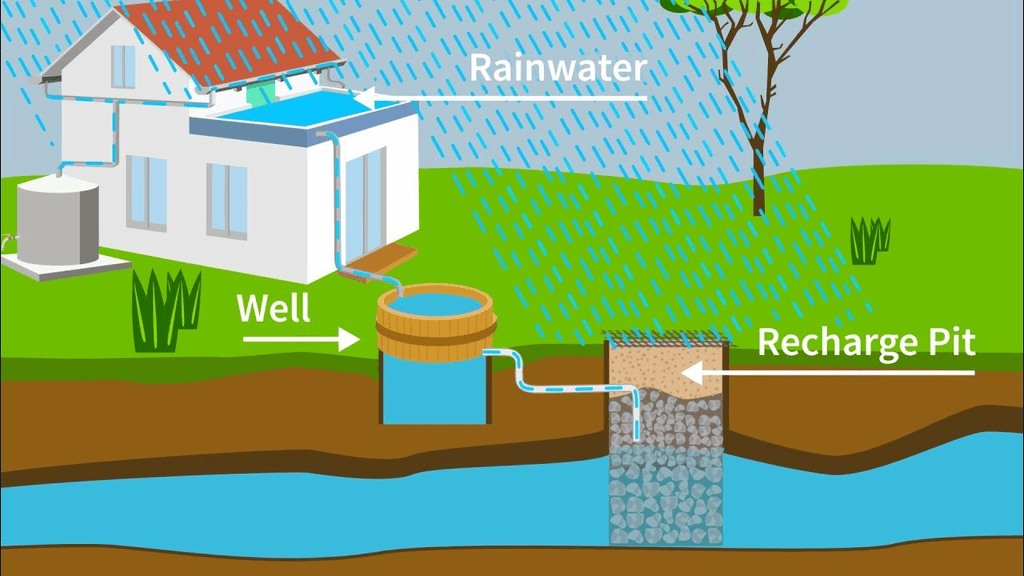 Rainwater Harvesting
Rainwater Harvesting
- Collection on the Roof: When it rains, water collects on the roof.
- Drainage Pipes: The roof is connected to a pipe that channels the rainwater.
- Flow Through the Pipe: The water flows down through this pipe, which is sloped to guide the water efficiently.
- Entry into the Underground Tank: The pipe leads directly into the underground tank, where the water is stored for later use.
This is a simple and efficient rainwater harvesting method.
Q.2. Have you ever seen a stepwell? Look at the picture. Can you imagine by looking at the picture that the steps go down several stories deep?
 Stepwell
Stepwell
Yes, stepwells are amazing structures, and by looking at the picture, I can imagine that the steps go down several stories deep. Here's how we can understand it:
Multi-level Structure: Stepwells are built with many levels of steps that descend deep into the ground. As you go lower, more steps appear, leading to the water source.
Access to Water: These steps were designed to allow people to reach the water easily, even when the water level was low during dry seasons.
Deep Architecture: From the picture, we can see that the structure stretches far below the ground, showing how ancient people ingeniously managed water storage.
Cool Environment: The depth of the stepwell also helped in keeping the water cool and shaded from the sun, making it a clever design for hot regions.
Q.3. Have you ever faced a shortage of water in your area? If yes, then what was the reason for it?
Ans.
- Yes, we have sometimes faced a shortage of water in our area.
- The main reason for this is the reduction in the water supply by the local authorities due to high demand, especially during summers.
- Sometimes, issues like pipeline repairs or water pollution also cause water shortages.
Q.4. a) Talk to your grandfather or any elderly person. Find out, when they were of your age:
From where did they get water from the house? Has there been a change now?
Ans.
- In the past, people used to get water from natural sources like:
- Wells
- Ponds
- Rivers
- Hand pumps - They had to fetch water from these sources every day.
- Now, there is a big change: Most houses get water through pipes.
- Water is supplied by the water department or from tube wells and tanks.
- People don't have to fetch water manually anymore.
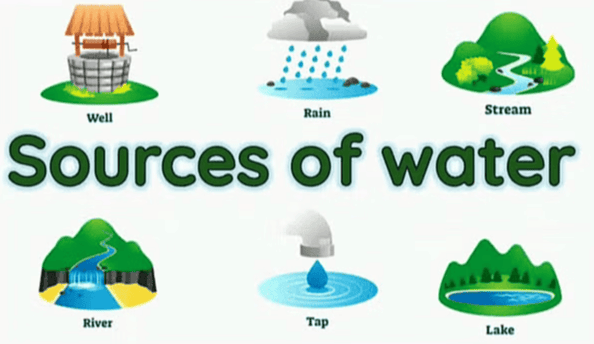
b) What kind of water arrangements were made for travelers – for example, piau, mashak (leather bag), or any other? Nowadays, what do people do about water when they travel?
Ans.
In the past, travellers had water arrangements like:
- Piau (a place with drinking water for travellers)
- Mashak (a leather water bag)
- Earthen pots placed along roadsides.
- These arrangements helped travellers stay hydrated during long journeys.
Nowadays, people usually:
- Carry their own water bottles.
- Buy packaged drinking water from shops.
- Use water dispensers or purifiers available in public places.
Customs Related to Water
Q.1. Can we even imagine life without water?
Ans. No, we cannot imagine life without water because:
- Water is essential for all living beings to survive.
- Every plant, animal, and human needs water to grow and stay healthy.
- Water is used for drinking, cooking, cleaning, farming, and many other important activities.
- Without water, life on Earth would not exist.
Q.2. Do you have some special pots for water at your place?
Ans:
- Yes, we have special pots for storing water at home.
- These pots help keep the water cool, especially during hot days.
- Some of the pots are made of clay or steel, which are traditionally used for storing water.
Q.3. Have you ever seen any beautiful building near the place of water? Where?
Ans:
- Yes, I have seen a beautiful building near a water source.
- It was a stepwell (baoli) with intricate carvings and designs.
- I saw it near a historical site in my city.
- The architecture was stunning, and the stepwell was used in the past to store water.
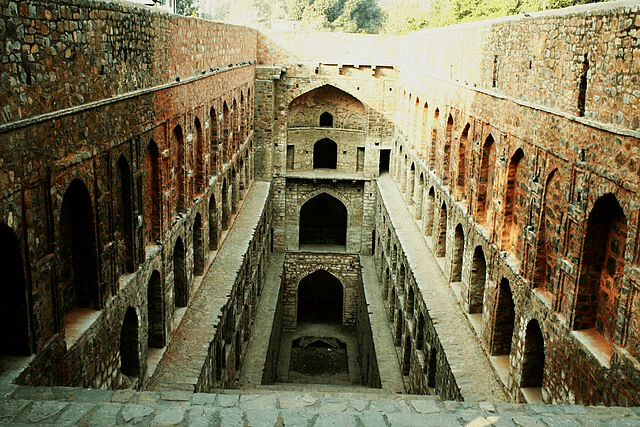 Agrasen Ki Baoli
Agrasen Ki Baoli
Find Out
Is there a lake, well, or stepwell near your house or school? Visit it and find out more about it.Q.1. How old is it? Who got it built?
Ans.
- Yes, there is an old well near my house.
- It is about 100 years old.
- The local community built it to meet their water needs.
Q.2. What kind of buildings are around it?
Ans. There are residential buildings around it.
Q.3. Is the water clean? Is it cleaned regularly?
Ans.
- No, the water is not clean.
- It is not cleaned regularly, so it has become dirty over time.
Q.4. Who all uses the water?
Ans.
- Nowadays, no one uses the well for drinking water.
- Some people might use it for washing clothes or other purposes.
Q.5. Is there any festival celebrated at this place?
Ans. Yes, during some festivals like Chath Pooja and religious ceremonies, people perform rituals near the well.
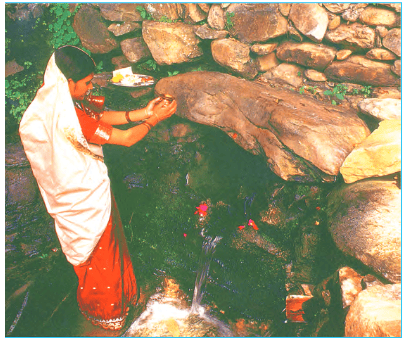 New bride performing pooja at pond
New bride performing pooja at pond
Q.6. Is there any water today, or is it dry?
Ans. There is still some water in the well, but it dries up during the summer months.
Discuss
Q.1. There are two old wells in the area where Punita lives. Her grandmother says that about fifteen-twenty years ago there was water in these wells. The wells could have dried up because:- Water is being pumped up from under the ground with the help of electric motors.
- The lakes in which rainwater used to collect are no longer there.
- The soil around trees and parks is now covered with cement.
Is there some other reason for this? Explain.
Ans. Yes, the causes mentioned above are true. Here are few more reasons why the wells have dried up.
- Electric Pumps: Water is being pumped from underground using electric motors, leading to a depletion of water resources.
- Loss of Rainwater Collection Areas: Lakes that used to collect rainwater have disappeared, reducing natural water recharge.
- Cemented Areas: The soil around trees and parks is now covered with cement, preventing rainwater from soaking into the ground.
- Over-extraction of Water: Excessive extraction of groundwater for agricultural or residential use can lower the water table.
- Climate Change: Changes in weather patterns may lead to less rainfall in the area, contributing to the drying of wells.
- Poor Maintenance: Neglect and lack of proper maintenance of the wells can cause them to dry up or become less functional.
- Destruction of Vegetation: Cutting down trees and plants can disrupt the water cycle, reducing moisture in the soil and affecting local groundwater levels.
The Story Today
Q.1. Do you get water in your house in any of these ways? Put a tick (✓) on that. If you get water in some other way, write in your notebook.
Ans. By all the means given in the picture, we get water to my house. We do get water by other means as well like:
- We get water by using a hand pump to draw water from underground water.
- There are tankers who supply water to our houses.
- We get water from the Jal Board through pipelines directly to our house.
- A few people draw water directly from the nearby canals.
Discuss
Q.1. Everyone has the right to live. Yet, is everybody getting enough water to live or even water to drink?Ans: Everyone has the right to live, which includes access to clean drinking water. However, not everyone gets enough water for their daily needs.
Q.2. Why is it that some people have to buy drinking water?
Ans: Some people have to buy drinking water because:
- They live in areas with water scarcity.
- The available water may be contaminated or not safe to drink.
- The water supply from local authorities may be unreliable or insufficient.
Q.3. Should it be like this?
Ans: No, it should not be this way. Water is a basic necessity, and everyone should have equal access to safe and clean water.
Q.4. Water on this earth is for one and all. Some people draw out water from the ground through deep bore wells.
a) How far is it correct?
Ans:
- Drawing water from deep bore wells is common in many places.
- While it provides water, it can lower the water table and deplete underground resources, affecting the environment and future availability for others.
b) Have you ever seen this? Why do some people pump directly into the Jal Board pipeline? What problems would other people face due to this? Do you have any such experience?
Ans. Some people install pumps directly into the Jal Board pipeline to access water quickly.
- This practice can lead to problems such as:
Reduced water pressure for others in the area.
Possible contamination of the water supply.
Water shortages for nearby households. - Many people might have experienced water shortages or seen neighbors using deep bore wells or Jal Board pumps.
- Such practices can lead to conflicts among community members, as some may face difficulties accessing sufficient water due to others overusing resources.
Look at this bill and tell
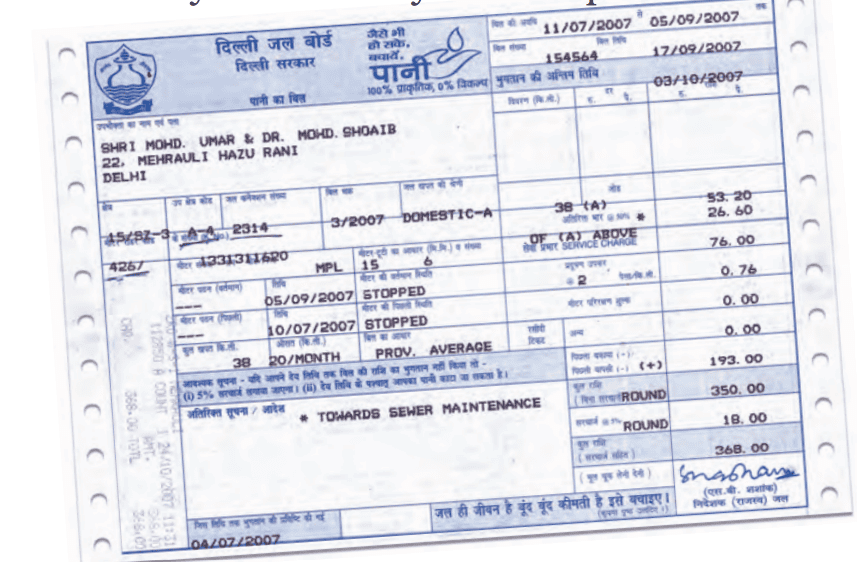
Q.1. From which office has this bill come?
Ans. This bill has come from Delhi Jal Board.
Q.2. Do you get a water bill at home? Find out from where it is sent?
Ans. Yes, we get a water bill at home. We live in Delhi and so get our bill from Delhi Jal Board.
Q.3. Why do you think Dilli Sarkar (Government of Delhi) is written under Delhi Jal Board?
Ans. Dilli Sarkar (Government of Delhi) is written under Delhi Jal Board because Delhi Jal Board is a subsidiary of the Government of Delhi.
Q.4. In whose name is the bill? How much money do they have to pay for each month?
Ans. The bill bears the name of Shri Mohd. Umar and Dr. Mohd. Shoaib.
Q.5. Do you have to pay for water? How much? Is the rate of water different in different colonies? Ask your elders.
Ans. Yes, we have to pay for water for about Rs. 300 per month. The rate is the same in different colonies.
Q.6. Have you ever read this kind of news in any newspaper? How did people solve their problem of water? Did they repair and reuse any old lake or stepwell?
Ans. Yes, a few years back there was an acute scarcity of water in my village.
- To solve the problem, villagers made collective offers and cleaned up and repaired the pond and all the wells of the village to make them usable again.
- Tons of garbage were taken out from these water bodies.
- The hard work of villagers bore fruit and even today they are fulfilling their water requirement from this pond and wells.
What we have Learnt
Q1. Make a poster: Do you remember the slogan – “Water on earth is for one and all.” Think of some other such slogans. Draw pictures and make a nice poster.
Ans. 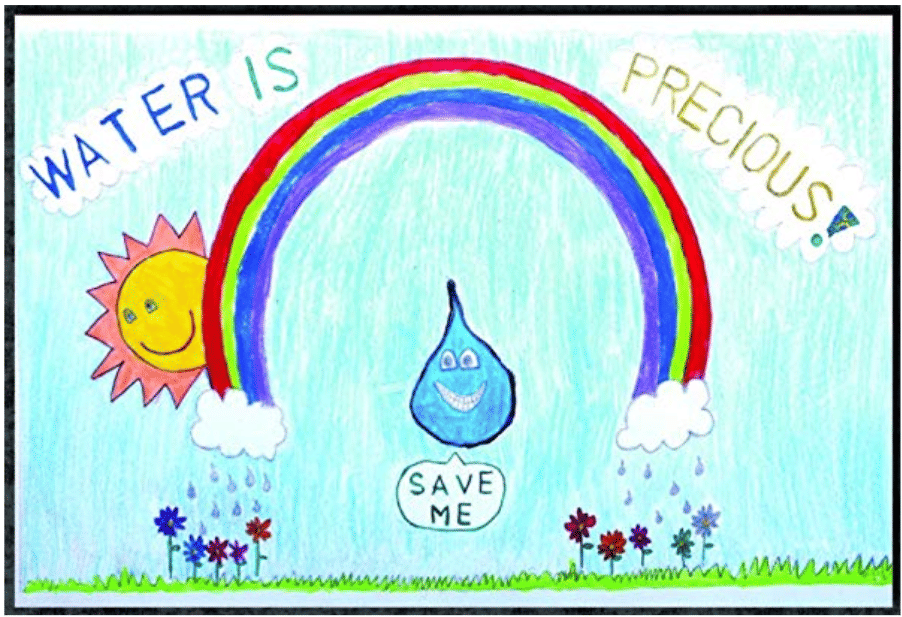
Q2. Bring a water bill, look at it and tell: This bill is from_______ date to_______date.
Answer: The billing is from 15th January 2020 to 2nd February 2020.
Q3. How much money is to be paid for this bill?
Answer: The bill amounts to Rs. 500 per month.
Q4. What else can you see in the bill, like the money spent on repair, maintenance etc.?
Answer: We can see other amounts billed for repair, maintenance arrears, etc.
|
53 videos|388 docs|51 tests
|
FAQs on NCERT Solutions for Class 5 EVS Chapter 6 - Every Drop Counts
| 1. What are some common customs related to water conservation in different cultures? |  |
| 2. Why is it important to conserve water? |  |
| 3. How can individuals contribute to water conservation at home? |  |
| 4. What are some ways communities can raise awareness about water conservation? |  |
| 5. How does water scarcity affect daily life in different regions? |  |
















